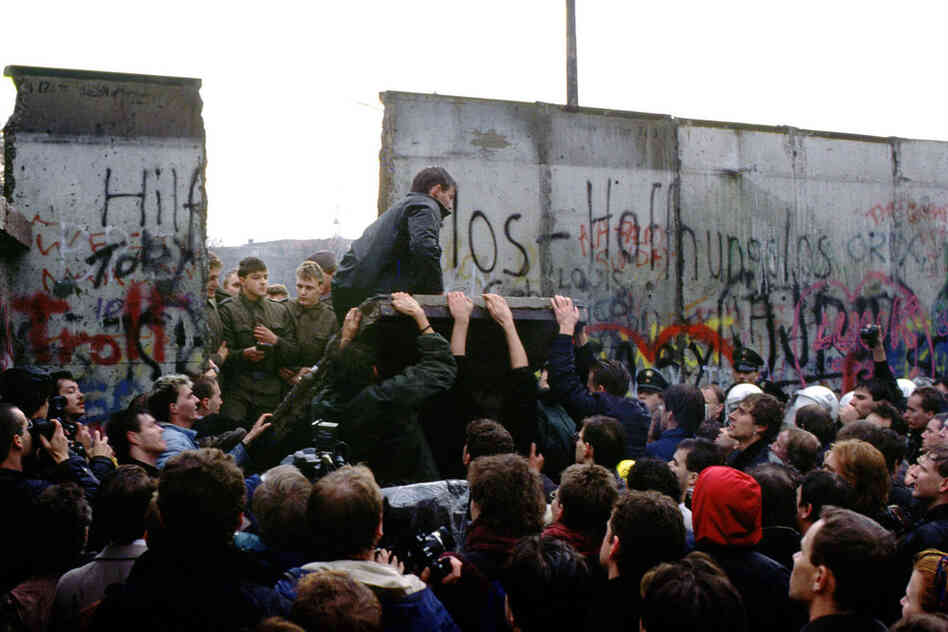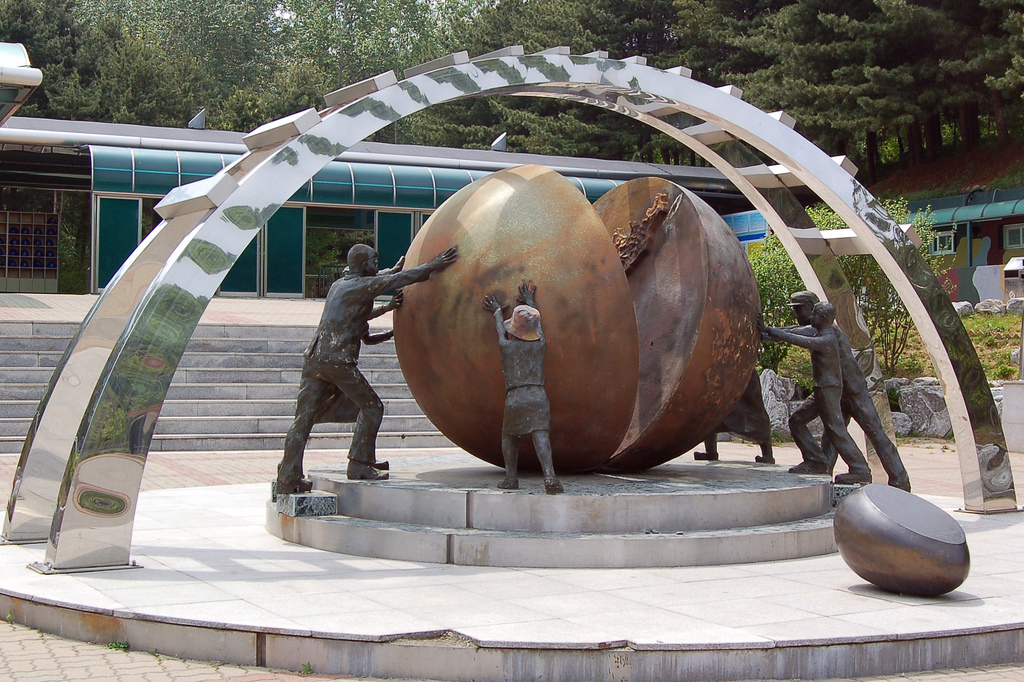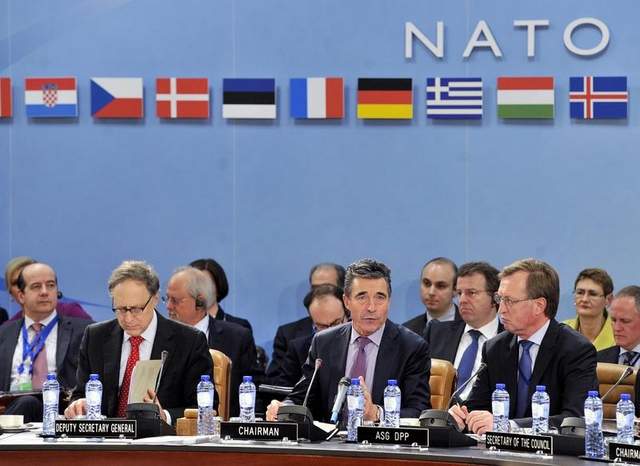
On 9 November 1989, the Iron Curtain separating the Eastern Bloc from Western Europe was lifted as the Berlin Wall came down. It sealed the end of an era of ideological differences between communist and capitalist states, and it was the beginning of a unique opportunity for a unified Germany.
Korea, much like Germany, has been divided since the end of World War II. Over the last two decades, South Korea has been examining Germany’s unification process to learn from its experiences. The objective is to have the two Koreas seamlessly and peacefully unify sometime in the near future.
Germany has confronted some significant challenges throughout unification, but the results overall have been relatively positive and beneficial. Despite its successful outcome, the West German government has been scrutinized for poorly planning and managing the economic consequences of amalgamating two states. The current conditions that the two Koreas are experiencing are not identical to that of pre-unification Germany; however, Korea can look to Germany as an instructive example to develop a carefully calculated unification model.
Lessons from Germany
Around the time that the Cold War ended, Chancellor Helmut Kohl of West Germany was one of the key actors who administered the necessary requirements for a civil unification of the two Germanys. Though he never imagined that the East and West would come together in his lifetime, he worked quickly to draft a potential plan for a forthcoming confederation of the two sides. As a result, he came up with the Ten Point Plan to successfully and peacefully merge the German Democratic Republic (GDR/East Germany) with the Federal Republic of Germany (FRG/West Germany).

Once the Berlin Wall came down, many skilled professionals from East Germany left for the West, leading to a ‘brain drain’ in the East. The rapid and large-scale volume of people leaving the GDR had a direct influence on its economic instability. With a shortage of skilled workers to contribute to the GDR, the FRG was conversely struggling to support the welfare of the overwhelming number of East Germans entering the FRG.
Even though the GDR’s economy was considerably stronger than most other states in the Eastern Bloc, it simply could not compare with the FRG’s market. Instead, there was a need to create a stable form of capital. The value of the East German Deutschmark (DM) was not on par with the FRG’s Ostmark- with an approximate ratio of one-to-four.
Despite the advice from the West German Government’s own Economic Council of Advisors, there was a generous currency union introduced at a one-to-one exchange rate. The rationale behind this was so that the GDR could compete in the same markets and industries as the FRG. What ended up happening was, “the East German currency was over-valued by 300%” which added to the non-competitiveness of East German products. This led to high inflation, devalued currency, and massive unemployment, forcing the German Bundesbank to pursue higher interest rates Consequently, the FRG was left bearing most of the GDR’s costs towards unification.
In 2010, the productivity in the former GDR was grounded at around 70% of the FRG’s level. It has been estimated that there is still two generations worth of catching up to do. The Government could have better prepared its population by initially introducing a high unification tax, and refraining from proposing a one-to-one currency union.
Seoul Searching
As a result of the 1953 Armistice Agreement, the Korean War came to an end, and the demilitarized zone (DMZ) along the 38th parallel was established. For over 60 years, the divided Korea has not taken any significant steps towards overcoming the lack of trust in the other state.
As an initiative to promote inter-Korean dialogue and cooperation for peaceful unification, the South Korean government’s Ministry of Unification has been developing ways to reach out to its neighbours in Pyongyang. In 2011, Seoul reached an agreement with the German government to launch the Korean-German Consultation Committee on Unification to make sure that Korea is on the right track to a successful merger if the opportunity presents itself in the distant future.
In August 2010, South Korea’s President Lee Myung-bak had unification towards the top of his political agenda. The president suggested the implementation of a unification tax in order to raise approximately one trillion dollars that the South is expected to spend to properly absorb the North. Seoul’s Ministry of Finance has estimated that the cost of unification could take up to seven percent of the annual GDP for a decade, but it would be able to profit from North Korea’s natural resources. North Korea also has a massive pool of largely educated people, but relatively untouched labour. As the costs of unification are projected to be massive, an additional labour force could be a huge boon.
Regardless of the amount of financial support there is, unification is bound to have a period of arduous adjustment for everyone in the short term. It is a politically and economically destabilizing risk that Koreans need to be aware of, especially since there is a larger economic disparity between the two Koreas and pre-unification Germany.
Learning from the Past
Unification has proven to be an enduring and difficult process. German policymakers made some hasty and irrational decisions during its unification, which came with a substantial cost. Nevertheless, Germany’s unification has been successful enough to set an example for Korea. With some calculated adjustments to fit Korea’s current conditions, Germany’s unification process is an excellent blueprint to work with.
The first recommendation for Korea is to avoid letting any third parties pressure unification. This should be treated as a gradual process under controlled conditions. In particular, North Korea should not be forced to participate in open dialogue against its will. Due to its unpredictable and potentially volatile nature, it is best to allow unification talks to occur in due course. Over a span of several years, the two Koreas can work on confidence-building measures and form a sense of mutual trust and understanding. This method may have been tried during Roh Moo-hyun’s administration, but it is worth another attempt, as there will likely be a better chance of cooperation with a lesser probably of North Korea reverting back to its hermetic state.
The second recommendation is to focus the most detailed planning on the country’s economy. That means to avoid introducing a currency union early on, especially not at a one to one exchange rate. If possible, the two different currencies should be maintained to absorb the shock of the exchange rate.
If policymakers in Seoul take one lesson from Germany, it is to note that a generous conversion rate has a high risk of inflation and devaluing the state’s economy. In order to prevent this from occurring, North Korea would also have to take some necessary measures to improve its own economic framework.
In the meantime, South Korea should continue strengthening its economy. Based on one of the first meetings held by the Korean-German Consultation Committee on Unification in 2011, Seoul is on the right path to financially prepare itself for unification. This may require higher domestic taxations and borrowing on a large scale. The latter will need the state to develop and maintain good diplomatic relations with its three influential neighbours- Russia, China and Japan.
When it comes to unifying a divided state, there are no shortcuts available. Germany’s case has demonstrated that unification is possible with positive results– such as a united country with improved rates of growth and productivity. In the long run, merging the two Koreas could reduce domestic and international hostility, leading to a decrease in defence spending, and an increase the entire peninsula’s productivity.
No one knows for sure if and when a divided Korea will be whole again. For now, South Korea is working towards following the necessary steps to make sure that history repeats itself for the better.




